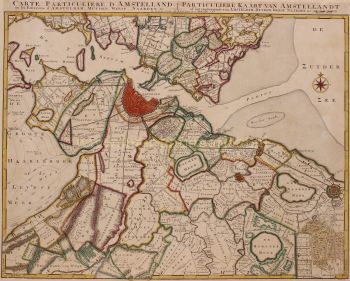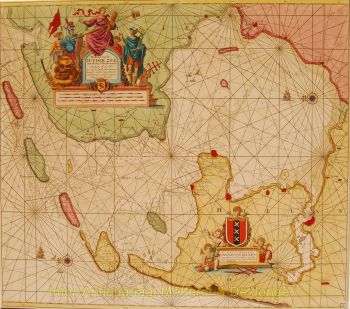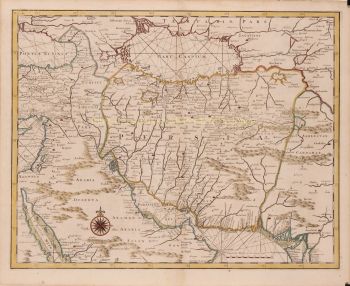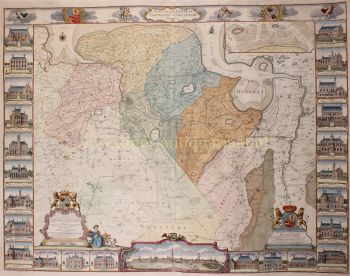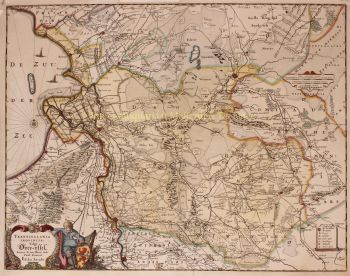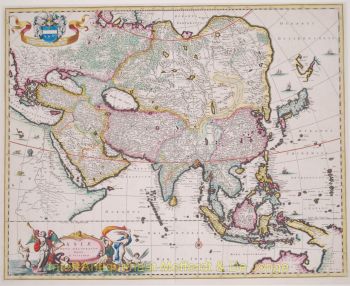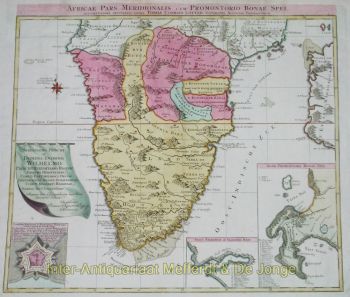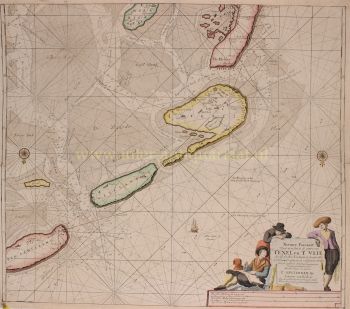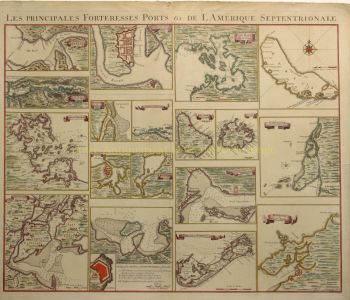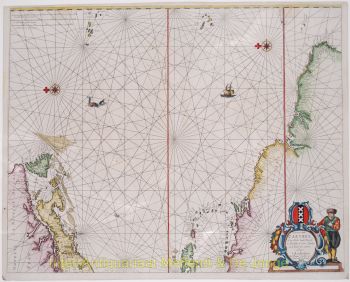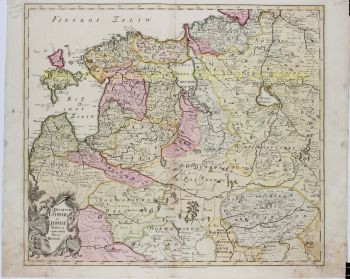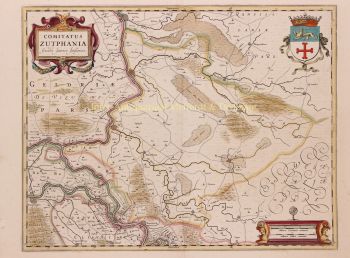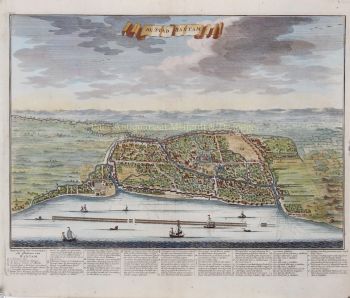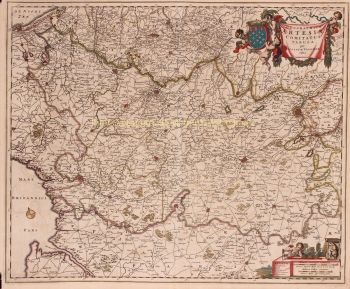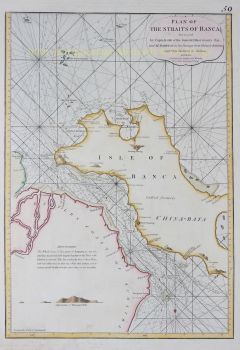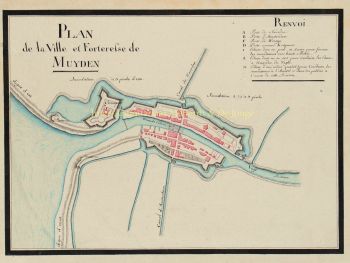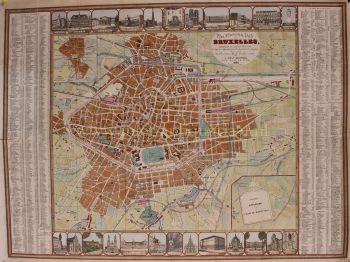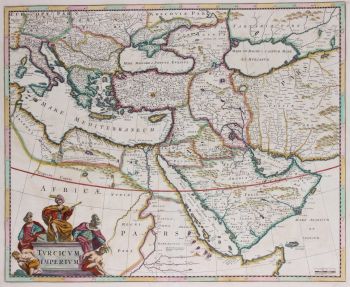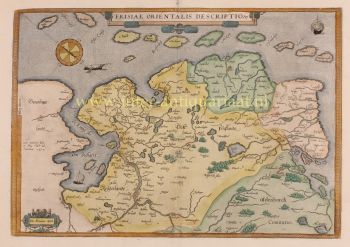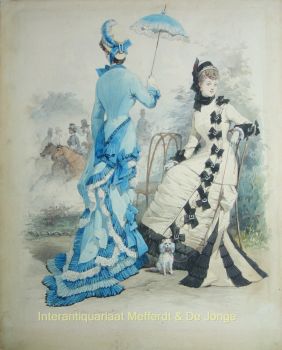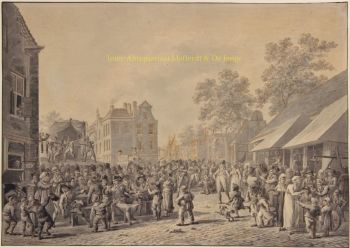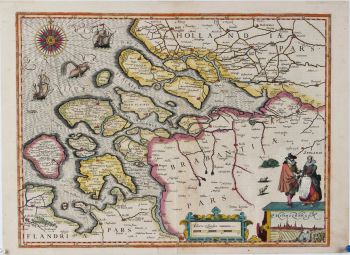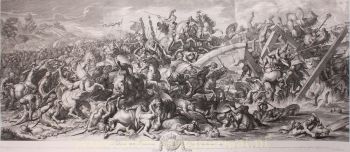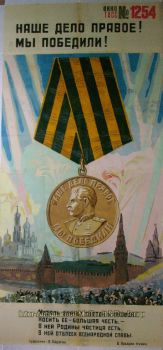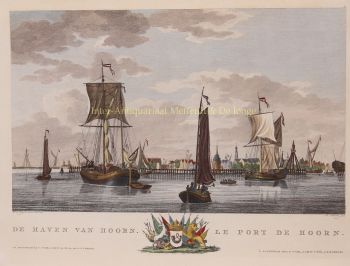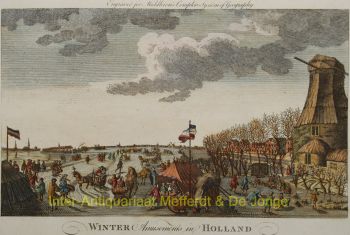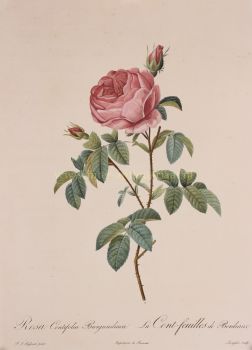Weltkarte 1745
Covens and Mortier
€ 2.250
Inter-Antiquariaat Mefferdt & De Jonge
- Über KunstwerkMappe-Monde Dressé sur les Observations de Mrs. De L'Academie Royale des Sciences et quelques autres et sur les memoires les plus recens Par M. De L'Isle. Copper engraving published by Covens & Mortier in Amsterdam 1745. Coloured by a later hand. Size: 50,8 x 63,5 cm. Guillaume De L'Isle's world map was originally published in 1700 and then revised and republished throughout the 18th century by De L'Isle and by subsequent map publishers. Dutch publishers Covens & Mortier's first version of De L'Isle's map was produced in 1720 adding the seascape with ships on the horizon at the bottom decorated with a second cartouche in the shape of a sea monster with a mermaid, merman and dolphins. They issued a later edition of that map (shown here) in about 1745 with the additional subtitle "Nouvellement corrigée apres les dernieres Decouvertes faites par l'Academie de Petersbough." The map consists of two central hemispheres, eastern and western, surrounded by four smaller polar projections. The right hand projections focus on the Northern Hemisphere while the left hand projections depict the Southern. At top center there is an elaborate decorative cartouche with various allegorical elements depicting the four great continents in female form, from top left: America, Europa, Africa, and Asia. The routes of a number of the most famous explorers of the major oceans of the world are shown from 1542 to approximately 1730, ending with the Russian voyages of Chirikov and Bering. Some of the more noteworthy features of the map includes the Russian explorations along the Northwestern coast of America, Aleutian islands shown in a semi-mythical configuration and attached to a highly conjectural Alaska; Edmund Halley's sighting of Antarctic ice; Bouvet's large Cap de la Circoncision; A depiction of the tracks of François Pelsaert's route from Australia to Java; Carpentaria attached to New Guinea; Abel Tasman's route, along with a depiction of Tasmania, distinctly separate from Australia. The map also retains one of the more curious peninsula depictions of California. Price: Euro2.250,-
- Über Künstler
Covens and Mortier (1721 - ca. 1862) war ein Amsterdamer Verlag, der Nachfolger des umfangreichen Verlagsimperiums, das von Pierre Mortier (1661 - 1711) aufgebaut wurde.
Covens und Mortier Map werden oft als abgeleitet kritisiert – aber das ist nicht vollständig der Fall. Pierre Mortier lebte von 1681 bis 1685 in Paris. Dort knüpfte er enge Beziehungen zu den größten französischen Kartographen seiner Zeit, darunter De L'Isle und D'Anville.
Sein Geschäftsmodell basierte auf der Nutzung niederländischer Drucktechnologie und Raffinesse, um hochmoderne französische Kartographie mitzuveröffentlichen. Nach Mortiers Tod im Jahre 1711 wurde seine Firma von seinem Sohn Cornelius Mortier (1699 - 1783) übernommen. Cornelius heiratete 1721 die Schwester von Johannes Covens (1697 - 1774) und gründete zusammen mit seinem Schwager die Firma Covens and Mortier.
Unter dem Covens- und Mortier-Aufdruck setzten Cornelius und Johannes Pierres Modell fort, die aktuellsten französischen Werke mit Erlaubnis zu veröffentlichen. Sie wurden schnell zu einem der größten und produktivsten niederländischen Verlagsunternehmen des 18. Jahrhunderts.
Die Firma und ihre Nachfolger veröffentlichten Tausende von Karten über einen Zeitraum von 120 Jahren von 1721 bis Mitte des 19. Jahrhunderts. Während ihrer langen Lebensdauer veröffentlichte die Firma Covens and Mortier als Covens and Mortier (1721–1778), J. Covens and Son (1778–94) und Mortier, Covens and Son (1794–ca. 1862).
Sind Sie daran interessiert, dieses Kunstwerk zu kaufen?
Artwork details
Related artworks
- 1 - 4 / 7
- 1 - 4 / 24
- 1 - 4 / 12



